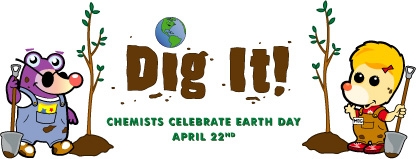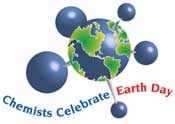Books and Video
Below are selected outstanding and recommended titles, many from the National Science Teachers Association. Descriptions are based in part on reviews from the NSTA web site.
Key: E = Elementary (K–5), I = Intermediate (6–8), HS = High School (9–12), C = College, G = General Public
General
- The Amazing Dirt Book. Paulette Bourgeois, Valerie Wyatt, and Craig Terlson. Reading, Mass: Addison-Wesley, 1990. 80 pp. ISBN 0201550962. (E)
- Examines dirt, the life it contains, and its uses, and includes a number of hands on activities.
- Dig In!: Hands-On Soil Investigations. National Science Teachers Association. Arlington, Va: NSTA Press, 2001. 129 pp. ISBN 0873551893 (pbk.) LCCN: 00-112121. (E)
- Covers soil formation, soil use, and soil conservation topics in twelve activities (NSTA Recommends).
- Dirt: The Scoop on Soil. Natalie M. Rosinsky, and Sheree Boyd. (Amazing science). Minneapolis, Minn: Picture Window Books, 2003. 24 pp. ISBN 1404800123. (E)
- Short text supports early investigation of soil (NSTA Recommends).
- Earthscapes: Landforms Sculpted by Water, Wind, and Ice. Jerry Wermund. Buda, Tex.: Rockon Pub, 2003. 48 pp. ISBN 097262550X. (E, I)
- Book of poems about landforms (NSTA Recommends).
- Sand and Soil: Earth’s Building Blocks. Beth Gurney. (Rocks, minerals, and resources). New York: Crabtree Pub. Co, 2005. 31 pp. ISBN 0778714179. (I)
- Discusses soil, its creation, its inhabitants, and its erosion.
- Science Fun with Mud and Dirt. Rose Wyler, and Pat Ronson Stewart. New York: Julian Messner, 1986. 48 pp. ISBN 0671555693. (E)
- Experiment-based investigation of soil science.
- Soil. Chris Oxlade. (Materials, materials, materials). Chicago, Ill.: Heinemann Library, 2002. 32 pp. ISBN 1588105873. (E)
- A simple presentation about soil, including its composition and animals that live in the soil (NSTA Recommends).
- Sustaining Our Soils and Society. Thomas W. Loynachan. Washington, DC: American Geological Institute, 1999. 66 pp. ISBN 0922152500. (HS)
- Text covers various aspects of soil science, and includes a poster of soil types.
- Unearthing Garden Mysteries: Experiments for Kids. Ellen Talmage, and Bruce Curtis. Golden, Colo.: Fulcrum Resources, 2000. 90 pp. ISBN 1555919936. (E)
- More than twenty classroom projects allow kids to discover scientific processes of gardening (NSTA Recommends).
- The World Beneath Our Feet: A Guide to Life in the Soil. James B. Nardi. Oxford, England; New York: Oxford University Press, 2003. 223 pp. ISBN 0195139909. (HS)
- Examines over 100 underground organisms, including those in the soil.
- Worms Eat My Garbage. Mary Appelhof. Kalamazoo, Mich.: Flower Press, 1997. 162 pp. ISBN 0942256107 (pbk.). (I, HS)
- Definitive guide to using worms for composting.
- Worms Eat Our Garbage: Classroom Activities for a Better Environment. Mary Appelhof, Mary Frances Fenton, Barbara Loss Harris, and Nancy Kostecke. Kalamazoo, Mich.: Flower Press, 1993. 214 pp. ISBN 0942256050. (I, HS)
- Classroom activity guide to accompany “Worms Eat My Garbage.”
Photosynthesis
- How Plants Make Food. Martin J. Gutnik, and Sam Shiromani. Chicago: Childrens Press, 1976. 45 pp. ISBN 051600526X. (I)
- Learning about photosynthesis through experimentation.
- The Magic School Bus Gets Planted: A Book About Photosynthesis. Lenore Notkin, Bob Ostrom, and Joanna Cole. New York: Scholastic, 1997. pp. ISBN 0590922467. (E)
- Class takes magical field trip to learn about photosynthesis. (Available as DVD/VHS video and in Spanish as El autobús mágico se queda plantado: un libro sobre la fotosíntesis).
- Photosynthesis. Frank J. Staub. (World of wonder). Mankato, MN: Creative Education, 2004. 32 pp. ISBN 1583412654. (E)
- Discusses photosynthesis at a basic level.
- Why Plants Are Green Instead of Pink. Julian May, and Phero Thomas. Mankato, Minn.: Creative Educational Society, 1970. 38 pp. ISBN 087191039X. (I)
- Describes how plants make their food and stay green.
Nitrogen Cycle
- Carbon-Oxygen and Nitrogen Cycles. Rebecca Harman. (Earth’s processes). Chicago: Heinemann Library, 2005. 32 pp. ISBN 140347060X. (E)
- Includes sections on the nitrogen cycle and photosynthesis.
- The Nitrogen Cycle. Paul Fuqua. Niles, Ill.: United Learning, 1994. Available from: http://www.unitedlearning.com/. (HS)
- Short video (14 min., available on DVD and VHS) which explains the natural nitrogen cycle, with a 10 question video quiz included.
Soil Erosion
- Erosion. Rebecca Olien. (The Bridgestone Science Library). Mankato, Minn: Bridgestone Books, 2002. 24 pp. ISBN 0736809503. (E)
- Discusses soil erosion and soil conservation (NSTA Recommends).
- The Land. Miquel Angel Gilbert. (Our living planet). San Diego, Calif: Blackbirch Press, 2002. 32 pp. ISBN 156711668X. (E)
- Text includes section on erosion, and is accompanied by an activity at the end (NSTA Recommends).
- Soil Erosion and Pollution. Darlene R. Stille. (A New true book). Chicago: Children's Press, 1990. 44 pp. ISBN 051601188X. (E)
- Discusses soil erosion, pollution and its effects.
- Weathering & Erosion. John Burrud, Valerie Chow, Brew Horton, Richard D. Soto, Desiree Coleman, and John Quimby. Wynnewood, PA: Schlessinger Media, 2000. Available from: http://www.libraryvideo.com/. (I)
- Short film (23 min., available on DVD and VHS) about erosion of rocks and soil.
Organic Farming
- Gives Peas a Chance!: Organic Gardening Cartoon-Science. Peter Barbarow. Happy Camp, CA: Naturegraph Publishers, 1990. 222 pp. ISBN 0879612045. (All levels)
- Cartoon presentation of various topics in organic gardening.

Copyright © 2006 American Chemical Society

